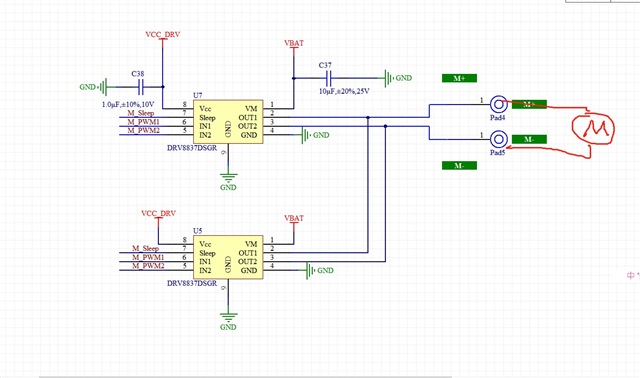Other Parts Discussed in Thread: , DRV8212
Hi team,
Our customer wants a BDC driver with driver current greater than 3A. It's powered by 1S battery. Supply voltage is 3.5V-4.2V.
Due to the limitations of PCB, they used 2pcs DRV8837 and put them in parallel. That is, put two OUT1 pins of 2pcs DRV8837 together, And put two OUT2 pins of 2pcs DRV8837 together. Then it diver the motor.
May I ask if there are some potential risks about parallel use? And could you please give some suggestions?
Best regards,
Fengyu


